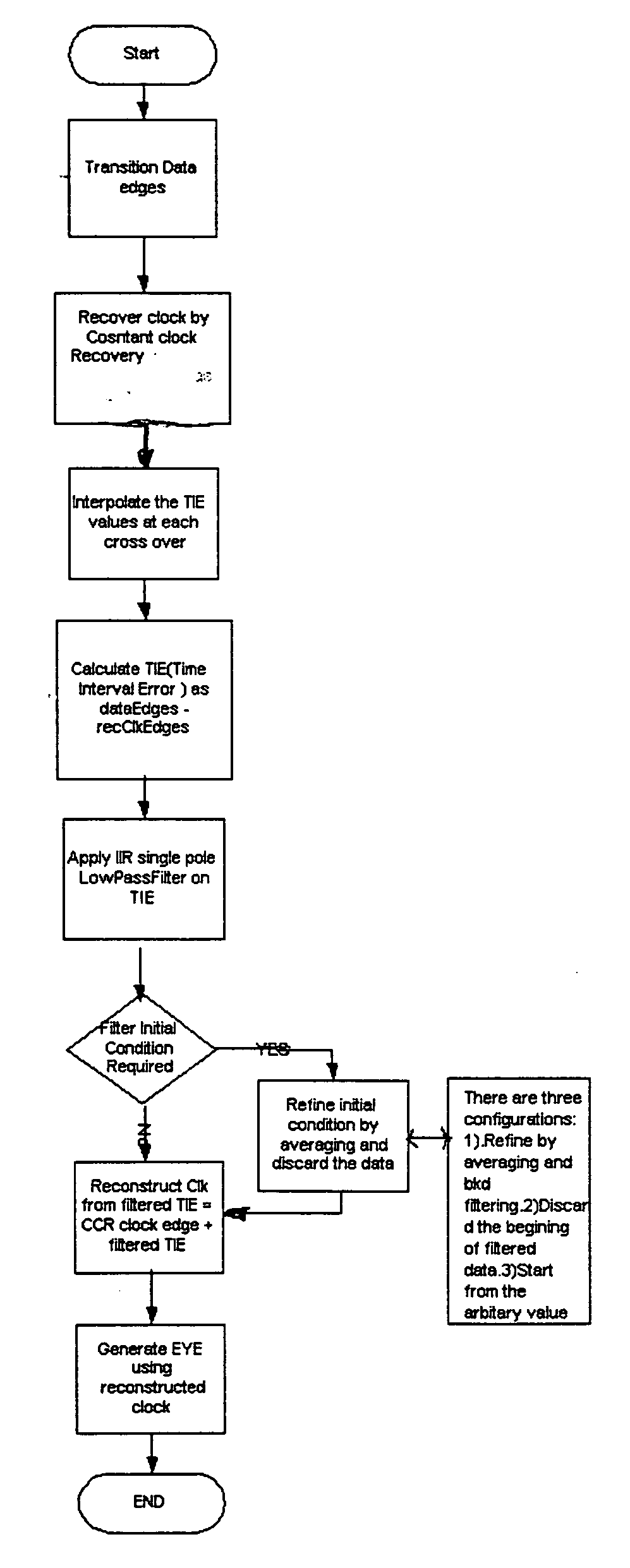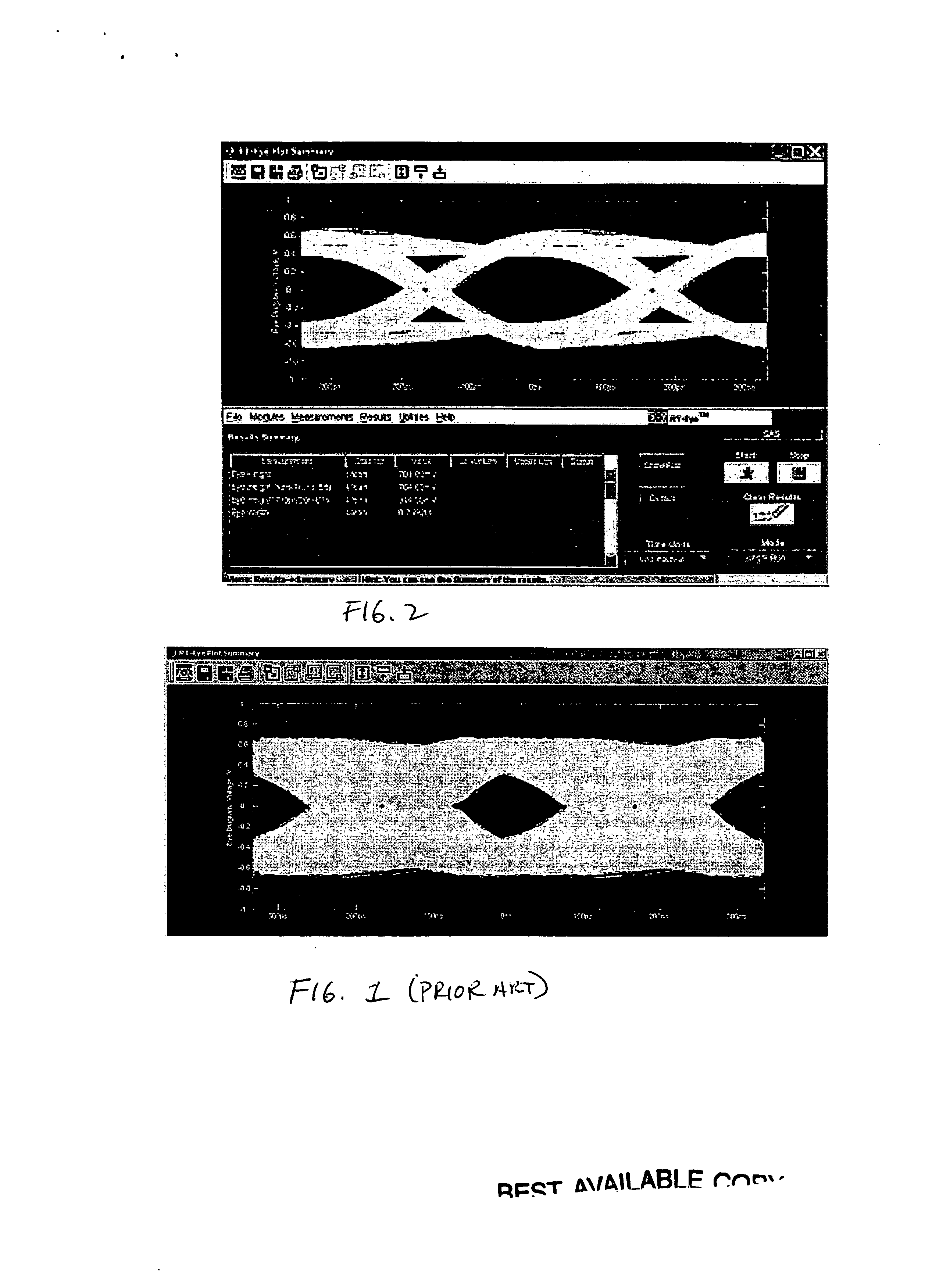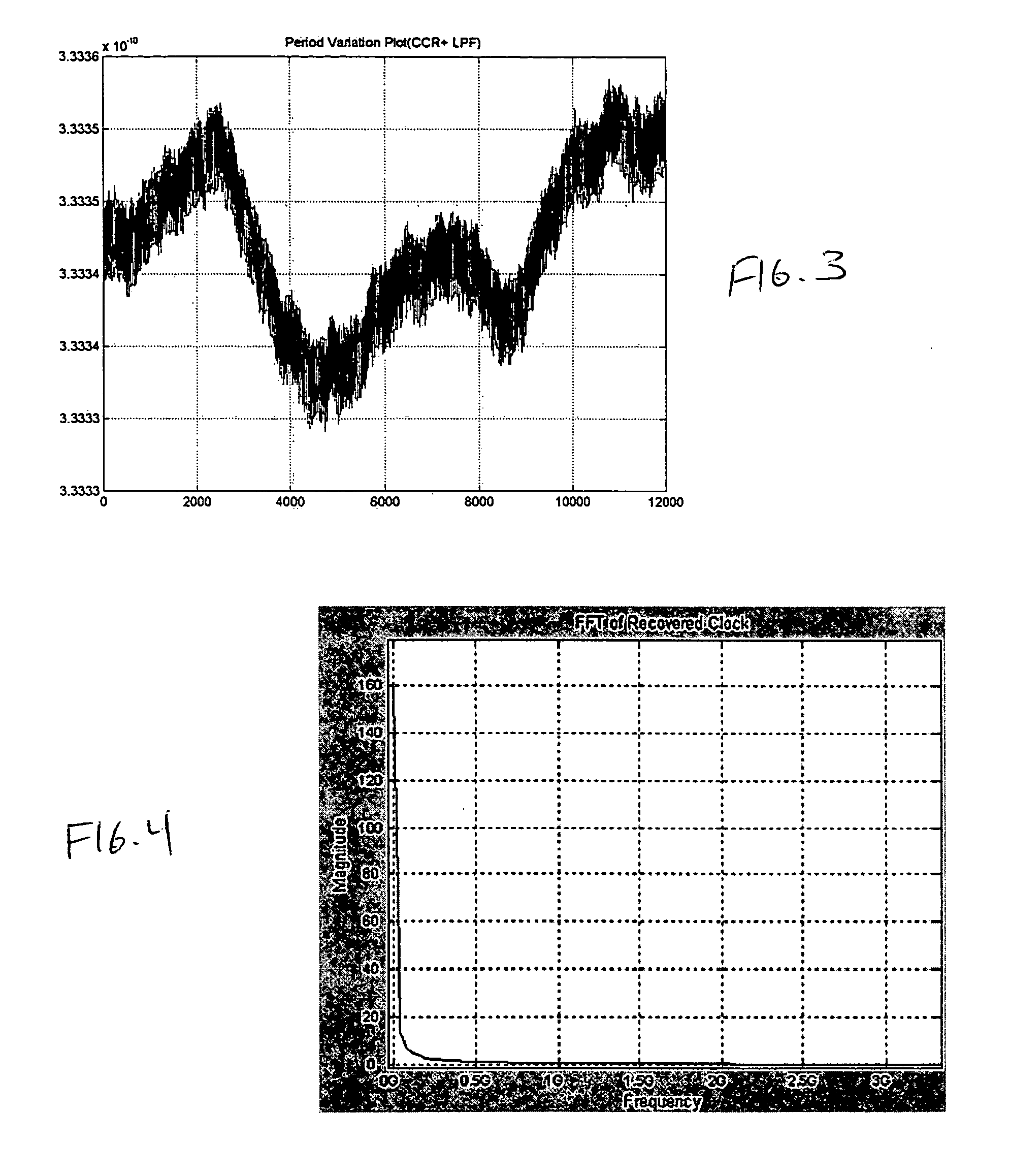Reference clock recovery for "eye" measurements
- Summary
- Abstract
- Description
- Claims
- Application Information
AI Technical Summary
Problems solved by technology
Method used
Image
Examples
Embodiment Construction
[0020] The “eye” diagram using only a constant clock recovery (CCR) method, shown in FIG. 1, has a lot of wander that is reflected as overall jitter on the “eye” diagram, as discussed above, whereas the “eye” diagram using a wander-tracked clock as recovered according to the present invention, shown in FIG. 2, reflects only the high frequency jitter.
[0021] The CCR algorithm as described in U.S. Pat. No. 6,836,738 is used to calculate a recovered clock. CCR is done by using a least square fit algorithm applied to transition time intervals with a pre-defined data rate. The difference between the estimated clock transition times and the actual transition times is time interval error (TIE). The calculated TIE values have both high and low frequency jitter components, and are available at the actual data transitions. The transitions may not happen at the data rate, such as for non-return to zero (NRZ) data, and depend upon the bit encoding of the serial data stream. So intermediate TIE ...
PUM
 Login to View More
Login to View More Abstract
Description
Claims
Application Information
 Login to View More
Login to View More - R&D
- Intellectual Property
- Life Sciences
- Materials
- Tech Scout
- Unparalleled Data Quality
- Higher Quality Content
- 60% Fewer Hallucinations
Browse by: Latest US Patents, China's latest patents, Technical Efficacy Thesaurus, Application Domain, Technology Topic, Popular Technical Reports.
© 2025 PatSnap. All rights reserved.Legal|Privacy policy|Modern Slavery Act Transparency Statement|Sitemap|About US| Contact US: help@patsnap.com



